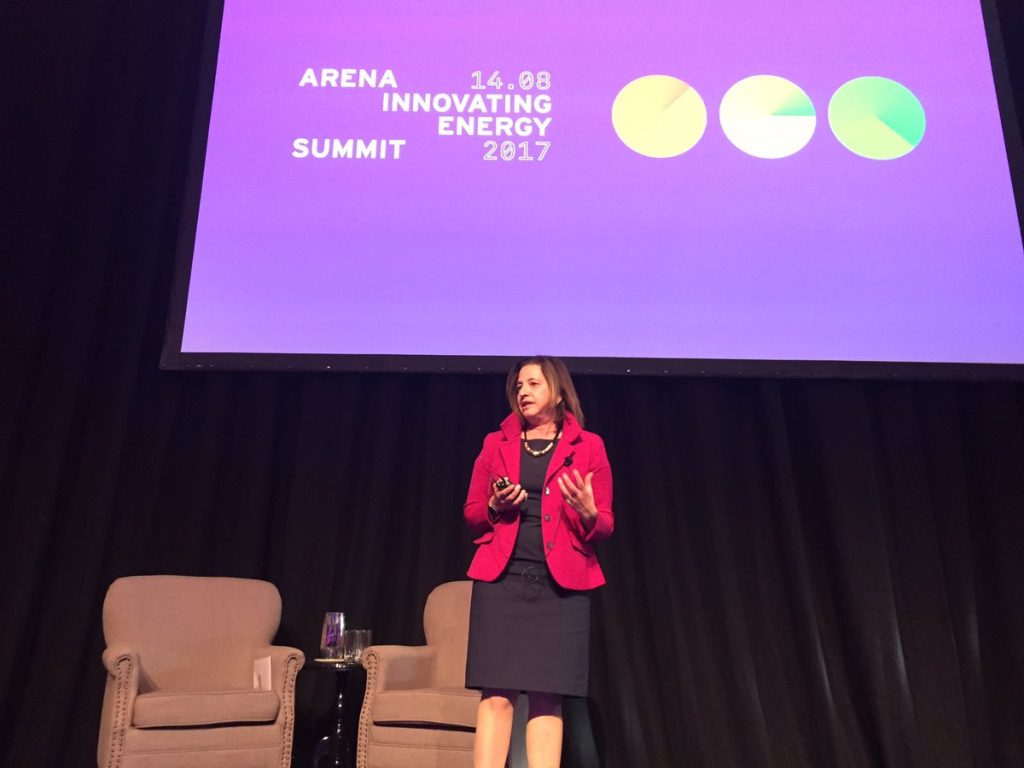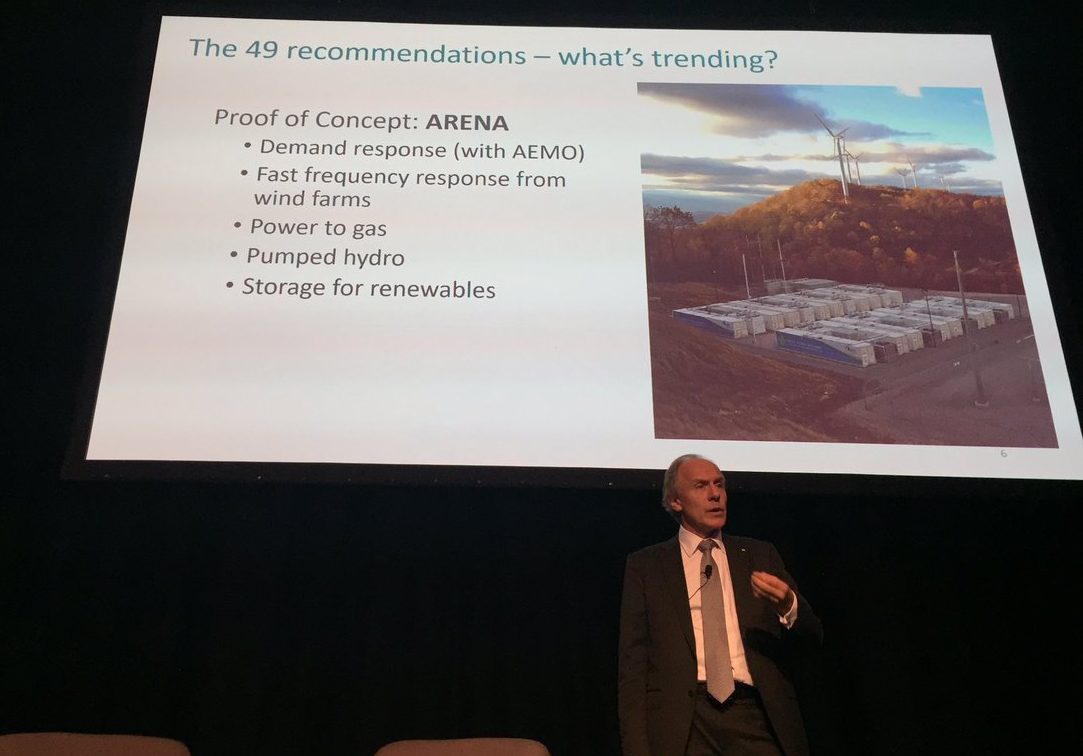ARENA and friends take over the corridors of power
The halls of Parliament House were humming with a different kind of power on Monday as more than 400 delegates gathered in Canberra for ARENA’s Innovating Energy Summit.

With the theme of ‘Powering Australia’s Future’, the summit was a chance for policymakers, clean energy professionals and the general public to explore the ideas that will shape our energy market over the 21st century.
The event, greatly expanded from previous years, also hosted politicians, renewable energy industry representatives and high-profile speakers.
ARENA CEO Ivor Frischknecht kicked off the TED-style presentations by expressing his delight at the many ARENA-funded projects showcased at the summit. And there will be many more to come – the agency still has around $700 million to invest in new renewable energy projects.
“We’re all part of the energy ecosystem in Australia, and together we will make the system more sustainable, more affordable and more reliable,” he said.

Embracing the future
Chief Scientist Alan Finkel used his keynote address to focus on the 49 recommendations of his energy market review that have already been adopted by the Federal Government. He also spoke about the need for governments to “embrace the future” and provide investors with a stable energy policy.
“Investors understand they can’t have investment certainty. That’s not what they’re looking for…But they are looking for policy certainty. If you’re going to sail off into the great unknown, you want to know that a few things are on your side because you’re taking a huge risk. And you’d like to feel that some of that risk has been managed by predictable policy,” he said.
Meeting the challenge
Dr Finkel’s perspective was backed up by Audrey Zibelman, CEO of the Australian Energy Market Operator (AEMO). “The challenge for Australia is not around technology,” she said. “The challenge is in getting the markets right and regulation right.”
Ms Zibelman also discussed the important role that AEMO is playing in Australia’s energy transition, including looking at things from the customer’s point of view and collaborating with other organisations on ‘proof of concept’ innovations.
Collaboration was also the theme of a joint presentation from AEMO’s Luke Barlow and the Clean Energy Regulator’s Mark Williamson, who shared some of the innovative projects the two agencies have been working on together.
Palpable excitement
Throughout the day there was a dominating sense of optimism and excitement, both from members of the public who registered to attend and from those on stage sharing their vision for a renewable energy future.
Clean Energy Council Chief Executive Kane Thornton spoke about the “extraordinary momentum for renewable energy in this country”. And Gloria Chan from the Clean Energy Finance Corporation (CEFC) talked about “bankable” clean energy projects and the CEFC’s Innovation Fund for new and emerging technologies.
Transformative tech
Other presentations examined the technical innovations that will drive the cost of clean energy even lower over the next decade or so.
UNSW Professor Martin Green revealed the important role that Australian ingenuity played in creating the global solar photovoltaic industry. He also suggested that any renewables-driven drop in Australia’s thermal coal exports will be offset by an increased demand for steel, aluminium and the other earth resources needed to build solar farms.
Professor Stuart White from the University of Technology Sydney talked about energy efficiency – one of the quickest and cheapest types of clean energy currently available. Professor White believes Australia should embrace significantly higher energy efficiency targets, pointing to the tenfold increase in light bulb efficiency as proof of what can be achieved.
Phil O’Neil from Advisian tackled the possibility of storing and exporting renewable energy by converting it into hydrogen. The idea is not without its challenges. But if the technology can be improved, hydrogen could become a significant export market for Australia.
CSIRO Research Scientist Wes Stein outlined the role that solar thermal could play in Australia’s energy mix by combining power generation with low-cost storage. And ANU Professor Andrew Blakers gave a fascinating presentation on the enormous potential that pumped hydro storage has for stabilising a renewables-based energy system.
Around ARENA’s projects
While the speakers captivated a standing-room-only crowd in one section of the Great Hall, the summit’s exhibition space showcased many of the revolutionary projects underway thanks to funding from ARENA.
Cutting-edge generation technologies were well represented, including Vast Solar’s concentrated solar power plant, Carnegie Energy’s Garden Island microgrid and a Unity Water pilot to generate power from fats, oils, grease and sewage.
Delegates could also learn about Southern Oil Refining’s renewable diesel and jet fuel lab, AGL’s virtual power plant and the Power and Water Corporation’s Solar SETuP program for remote Indigenous communities.
Groundbreaking digital projects included deX – GreenSync’s decentralised energy trading marketplace – and AREMI, an online platform mapping all of Australia’s renewable energy resources.
See all projects supported by ARENA.
If you couldn’t make it along to the Innovating Energy Summit, don’t worry – videos of all the presentations will be available here on ARENA WIRE over the next few weeks.
This article was originally written by Simon Mitchell, Writer.
LIKE THIS STORY? SIGN UP TO OUR NEWSLETTER

ARENA